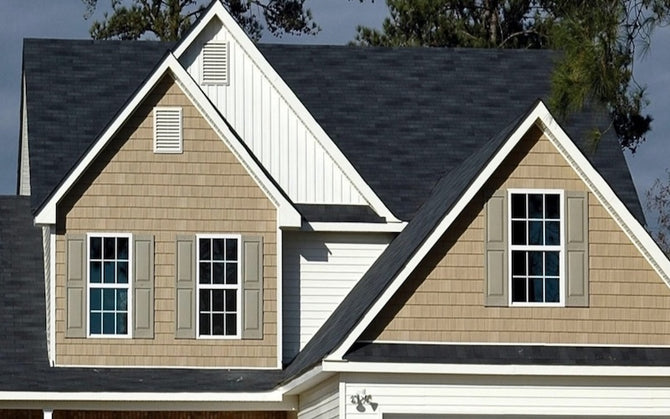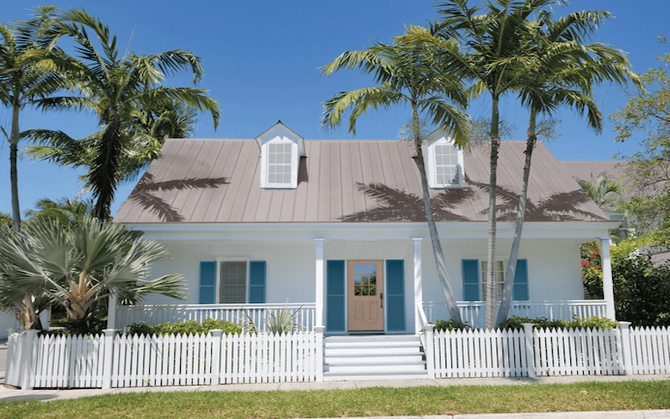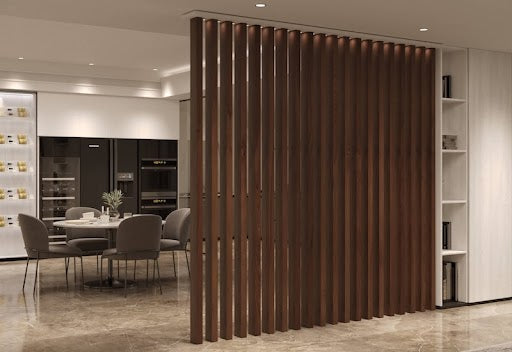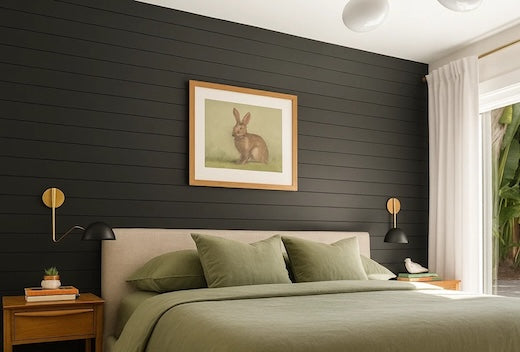Tips for Installing Wainscot Panels on Stairs
Want to print a copy? Find a PDF here
Getting that professionally finished look is made easier when you follow these tips.

- All the Elite Pre-cut panels (a) going up a set of stairs should be similar in size; this gives your installation symmetry. The width of the panels comes down to personal choice in regards to appearance. Each kit includes 4 panels that measure 44”h x 20”w. Use an angle finder (shown below) to measure the angle of the stairs. To do this, place one arm of the angle finder against the vertical rise of the stinger (c) and the other arm onto the diagonal side (the side going up) of the stringer. Use this angle to cut the tops and bottoms of your stiles (d) and the tops and bottoms of your panels (a). If you have a Raised Panel Kit, you will have to shape the panels after cutting to size; using the (99-519) Freud Router Bit. Note: In the case of Wall Panel Wainscoting, panels are not necessary; your existing wall will be used as a panel. Only the ends of the stiles will have to be cut and reshaped using the Freud 99-470 Router Bit.

- The Lower Rail is 8” high, however, you should not install a full height Lower Rail diagonally up the stairs. The reason for this is that it would be too big and it will protrude into the panel too much making the panels on the stairs look too small. The Lower Rail needs to be cut down; in this example (f) it is cut to 4” in height (the height is really up to you, 5” works as well). The Lower Rail should butt up flush with the vertical face of the Stringer. Measure back 4” horizontally from the stringer on the Lower Rail and make a 45° cut. The cut will end approximately halfway down on the Lower Rail. The “Variable Angle” will all depend on the angle of your stairs (all stairs are different). In this example, our Variable Angle was 120° because the diagonal angle of the stair is 120°.

- Note the position of the Transition Stile (e) and both the top and bottom transitions in the different pictures included in this instructional. The Bottom Transition is placed next to the stile (e) whereas the Top Transition is placed above the stile (e). This is done in order to accommodate the stringer without interfering with, or protruding into the panel. Using this technique also prevents odd “L” shaped panels which are difficult to cut and especially difficult to shape using a router.
- The next part to consider is the small transition (b) on the Top Rail between the horizontal installation and the diagonal stair installation. Follow the same guidelines set for the Lower Transition described in Step 2. The difference here is that the Top Rail is installed at full height and should not be cut down in height. Remember, that the variable angle will remain the same for both the top and the bottom of the installation.

- Use Spackling (plaster compound) on any seams, corners, and nail head holes you may have on the wainscoting itself. Allow the spackling to dry out completely, and then sand it down using fine-grit sandpaper. Dap (paint-able latex caulking) should be used anywhere that the back of the wainscoting touches the wall. The Dap will fill the seams between the wainscoting and the wall. It will allow the wainscoting to move as the wall and the home expands and contracts depending on weather and the time of year.
- After sanding and caulking, it’s time to apply a finish coat of paint. Any type of paint can be used, however, we recommend using Semi-Gloss. Wainscoting is applied to the bottom of the wall and tends to get scuffed and dirtier than the rest of the wall; therefore you need paint that is easy to clean.

Want to print a copy? Find a PDF here








